I can see where ground cover plants have their purpose. They are a little like mulch in that you can use them to fill in the empty spots in your flower beds with interesting colors, textures, and even flowers. My personal experience with ground cover plants has been one of self-discovery, because I’ve learned that I don’t like any plants growing out of control in my beds. I’ve also learned that I want my ground cover plants to grow quickly because I don’t have the patience to wait season after season for them to fill in whatever space I have for them. You may have noted the conundrum here: I want the plants to grow fast, but not too fast. Get it? I am a Type A control freak and the notion of plants “taking over my beds” is simply unacceptable, but waiting season after season for them to fill in my beds is nearly as bad.
I’ve had several run-ins with ground cover, the most terrifying being with a plant called creeping Jenny. Let’s see what my friends at The Spruce (thespruce.com) have to say about this plant.
“Creeping Jenny is often thought of as a nuisance in the yard because of how well it spreads. It’s one of those plants that straddles the line between obnoxious invasive and beautiful ornamental. Plant it in the spring and watch its greenery!”
When Sasha at Sun Nurseries planned my beds, she added creeping Jenny in my astilbe bed and in the bed where I’m now trying to grow Japanese ferns. To my horror, by late summer 2022, here is what my astilbe bed looked like.
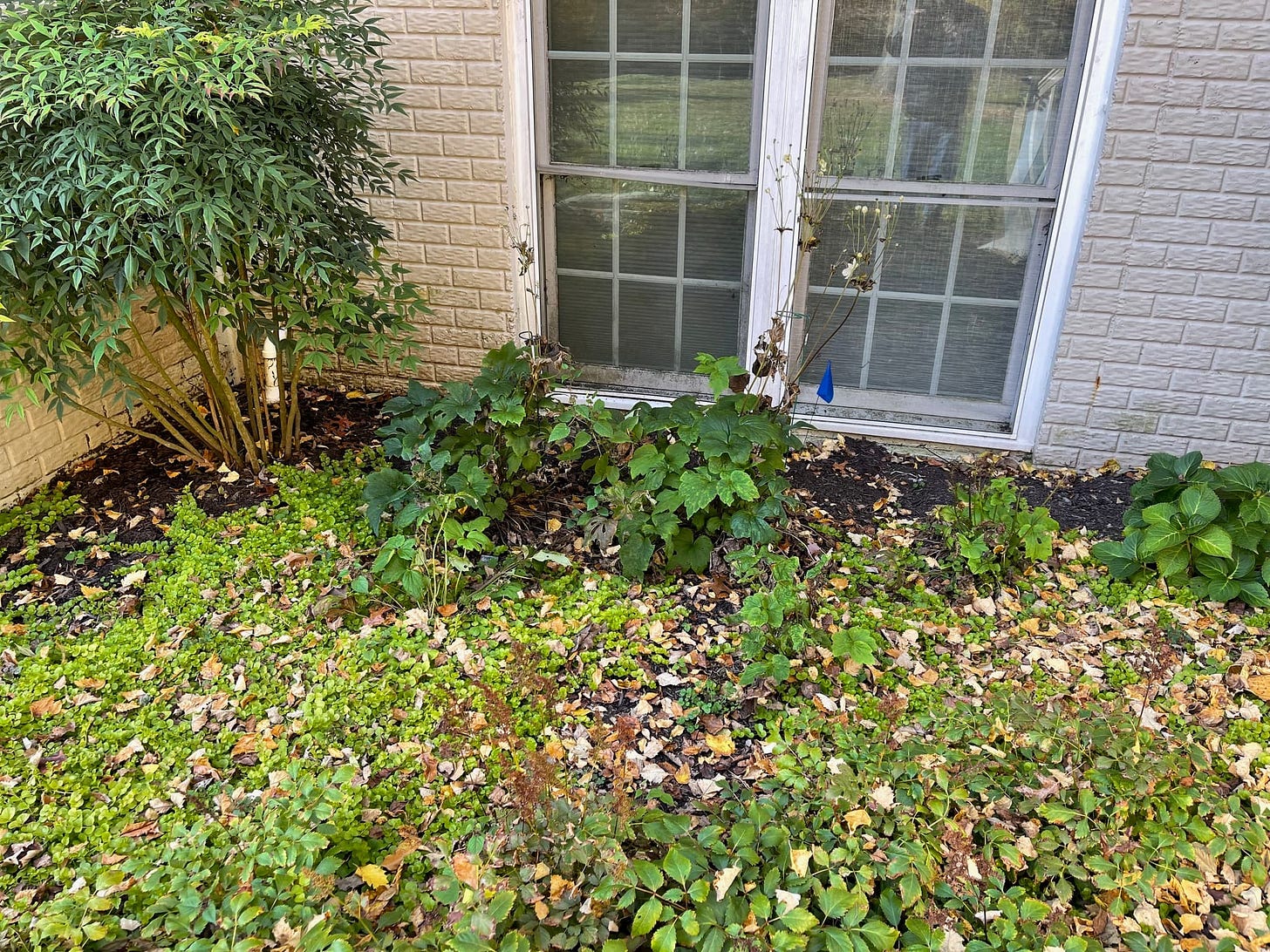
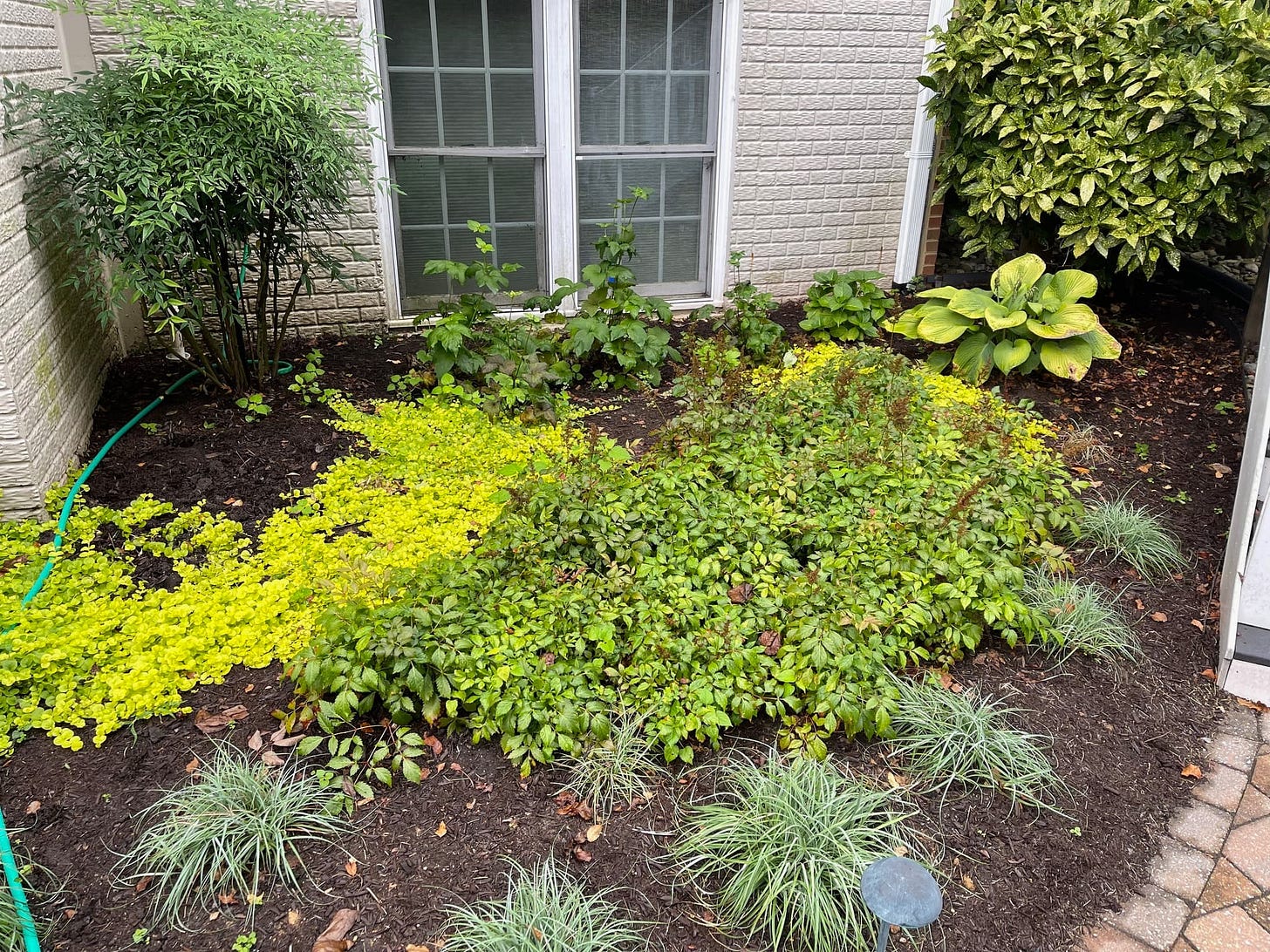
I couldn’t take it anymore and ripped out all the creeping Jenny by the end of the 2022 season. Now the bed looks tidy, but empty. Hmmm.
The other ground cover plants that were part of my Sun Nurseries landscape design were shale barrens sedum, which is in my firepit bed next to my turtlehead plants, and yellow epimedium, which was originally planted in my woodland garden behind the driveway. Sedum is a weird category of plants that includes Autumn Joy sedum, famous in my garden for having leaves that small birds love to devour. On April 17 of this year, The Spruce updated an article called, “10 Sedum (Stonecrop) Varieties to Plant as Ground Cover” if you’re interested in this sort of thing. Shale barrens sedum is a low-growing, creeping ground cover that flowers in early spring. It does well in partial shade (so they say).
My experience is that it falls into the “too slow to grow” category that drives me crazy. This is its third season, and my shale barrens sedum still isn’t growing (or creeping) as fast as I’d like. But ... this year, for the first season, it’s flowering in the spring, with spidery white blossoms that cover the leaves. If you close your eyes and imagine a large swath of sedum flowering in the spring, you can see how it would be popular with gardeners.

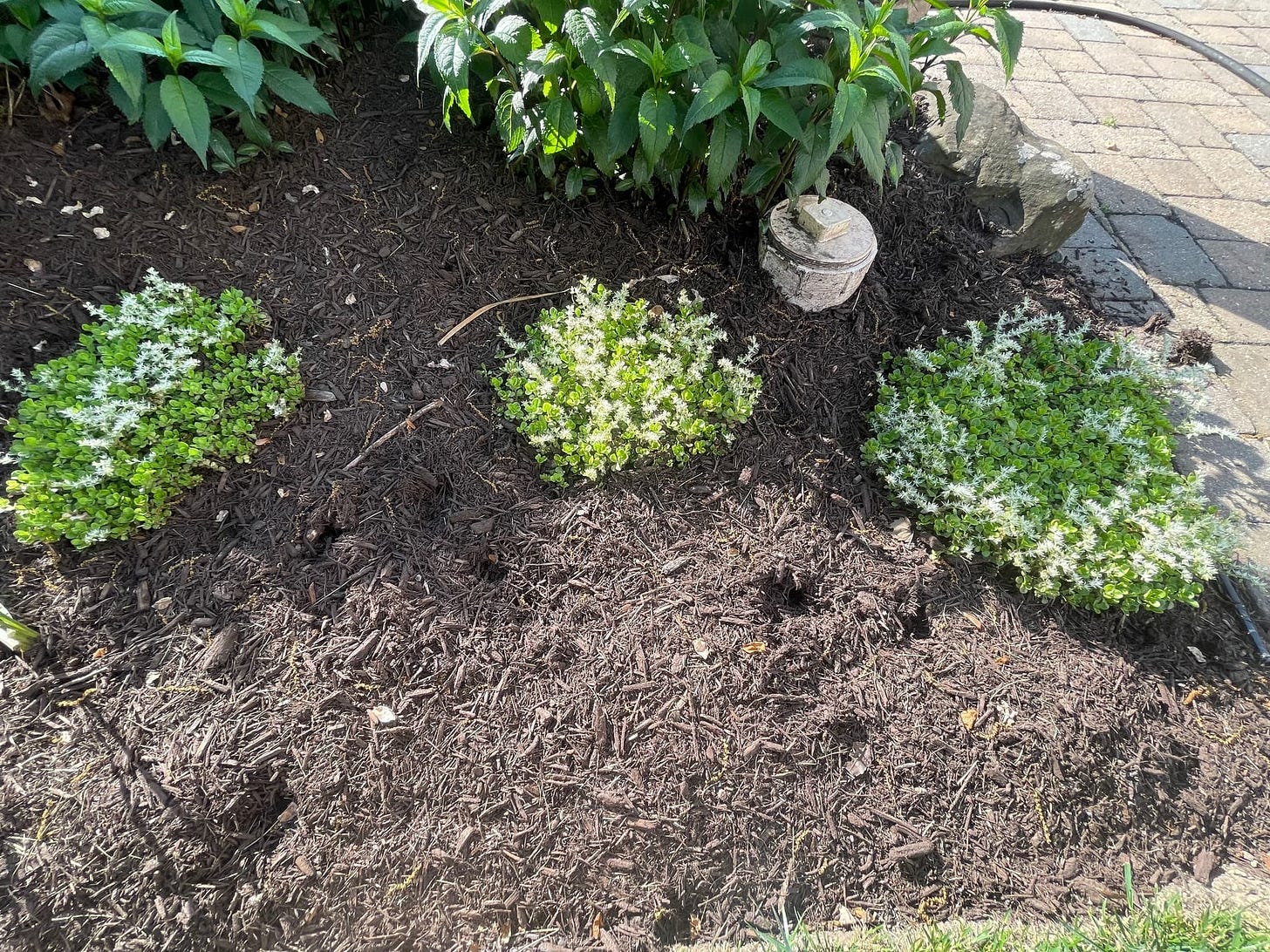
The third kind of ground cover I’ve tried has the very strange name of epimedium, which explains, I suppose, why it is more often referred to by its common names, barrenwort or bishop’s hat. According to The Spruce, “Epimediums are an ideal addition that work well as ground cover plants in partially shaded areas where other plants may fail to grow.” If you go to Sun Nurseries, the staff will warn you that these plants can quickly grow out of control. But not for me. I originally tried six epimedium plants in my woodland garden three seasons ago, and today I have six rather forlorn looking clumps of plants that refuse to creep. Last season, I thought I would try a few more epimedium in a different location, and I ended up planting them next to my shale barrens sedum. I believe that at the time I declared, “let the best ground cover win.” It’s only the second season for these epimedium plants, but they are showing signs of acting like a ground cover. Plus, the leaves are beautiful.
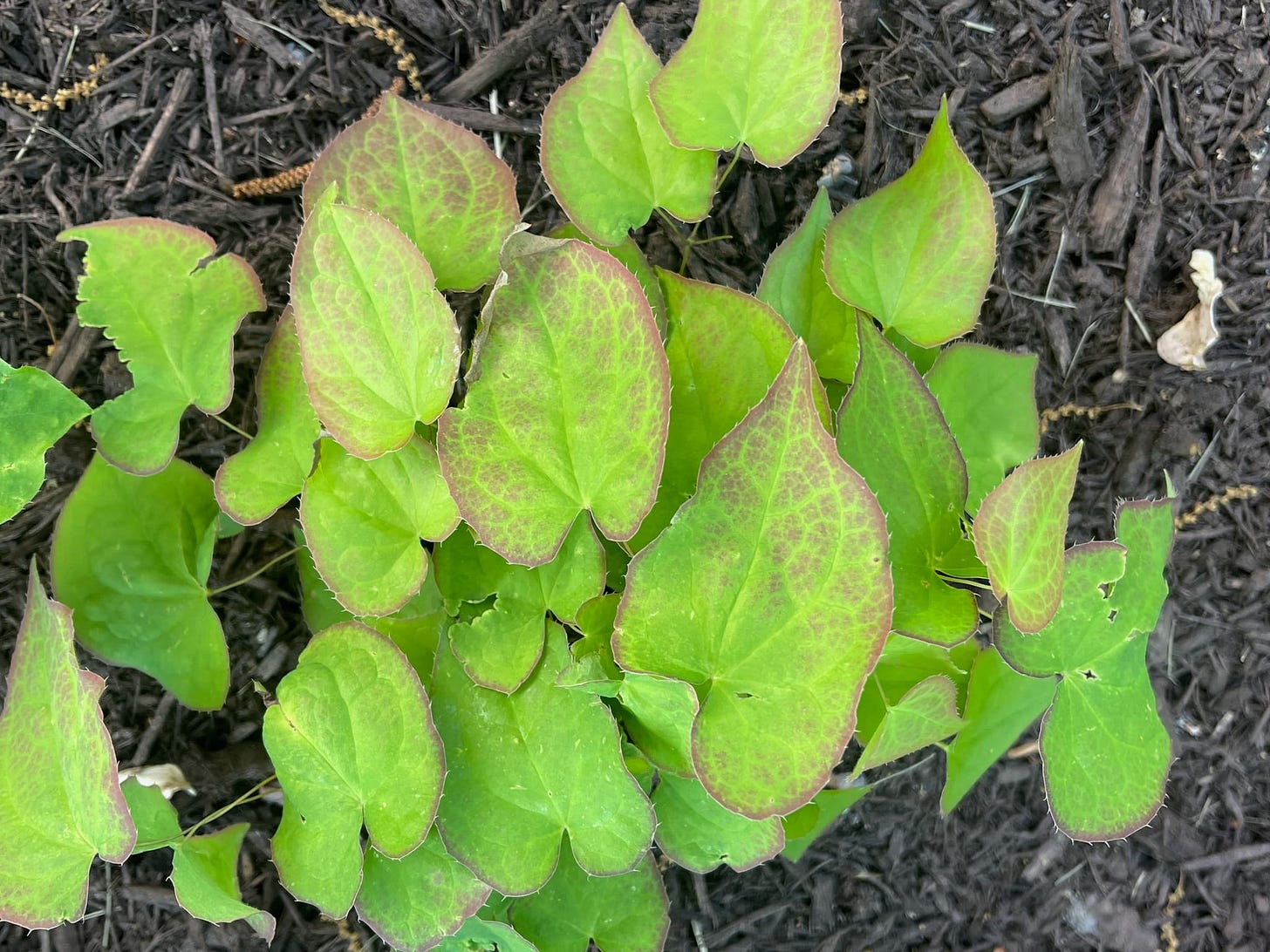
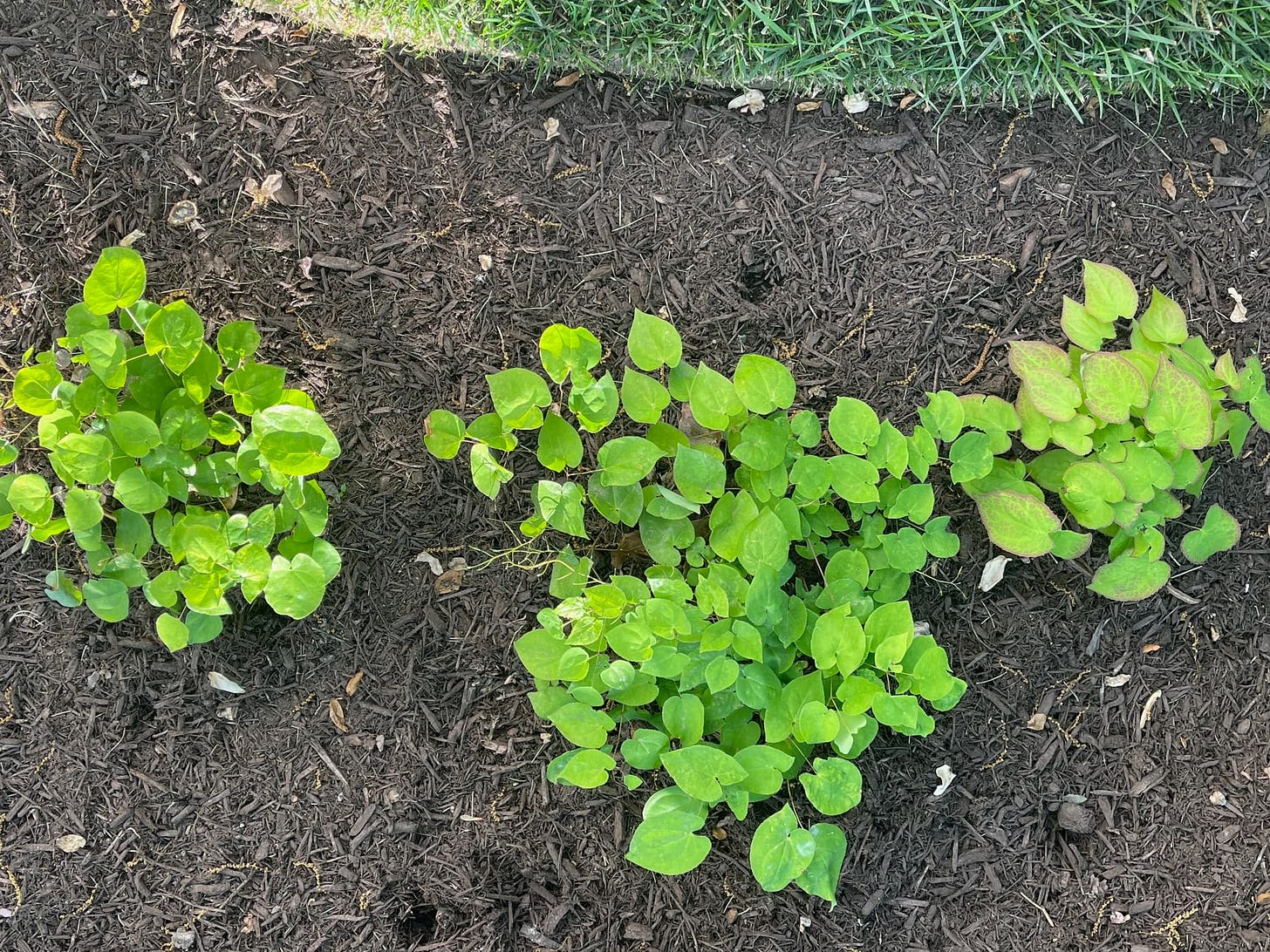
This season I’m on a different mission to find a sun-loving ground cover for my sun bed. The first choice seems to be a plant named garden phlox, or creeping phlox, or woodland phlox (as usual there are plenty of names to choose from) that supposedly flower all summer and do well in full sun. Apparently, you have to be careful with phlox because the various cultivars don’t do equally well in the sun versus shade. I might add that I have several other plants in the garden that show up on lists of ground covers, although I don’t necessarily think of them that way. For example, hosta is often referred to as ground cover. In fact, it seems almost any plant that spreads can be thought of as ground cover.
Note: Be careful of invasive plants. These are species that are not native to the ecosystem of your garden, and whose introduction is likely to cause economic or environmental harm, or even harm to human health. Ask the pros at your local nursery for help to identify invasive plants.
I’ll be interested to see if my sedum or epimedium has a breakout year this season, although I’m afraid that most of the spring growth has already kicked in and I’ll be waiting until next year to see if my ground cover will creep and fill in my bed. If it does, I’ll probably be complaining that it is growing “out of control” and start pulling it out. Clearly, I need therapy.
I hope you enjoyed this week’s post. If you want to check out posts that are in the archives, simply click on the small image of me at the top of the post and it should take you right there. And, if you find yourself enjoying the newsletter, and if you are so inclined, feel free to share with your friends and associates.




Well then, I can thoroughly recommend Dr. Earth”s organic fertilizer. The Pure Gold is exactly that. Nothing complicated just spread it around the plants and water. Or to make it simpler, get a Miracle Gro dispenser that you hook to your hose. Fill the feeder and water just like that. HUGE difference in your plant growth will you see. Not to mention colorations and flowers. Since it’s not a veggie garden there’s no real reason to go organic. Just fertilize those babies. Every couple of weeks to start. You’ll be amazed. Good luck Ken… and a big HI to Linda!!!!
Yes Ken, you need therapy…..😂😂😋. Simple question but… are you an avid fertilizer and waterer? Makes a huge difference. In MD, I had hostas that were magnificent on the east facing side of our house. Filled around them with impatiens and they went gang busters. On the sunny bed, planted the wonderful perennials coreopsis and coneflowers. You need a trip to England to see their gorgeous gardens…. I think your wifey would love it. Thinking of you, Ellie W, wife of the big D formsman 👍🥰